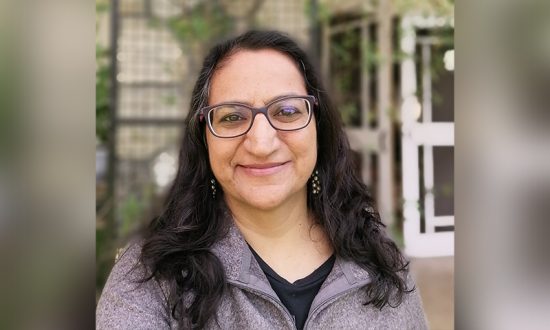Monica Kochar is a Mathe-magician and a creator of HumaneMaths! A doctor who cures math-phobia, her approach makes Maths not only interesting but humane. HumaneMaths consists of a toolkit of some of the best practices in education for Maths classes with a focus to creating an inclusive classroom. The idea is to bring a mix of thinking, feeling and doing; all three in the lessons. She created it after exploring various methods in her classrooms for over 15 years. She discovered that no single method is the answer to making maths accessible to students. We need a toolkit of strategies and develop a sensitive relationship with students to know when to use which. She has applied this approach successfully in her long and colourful teaching career, where she worked with national (Indian) as well as the international curricula – IGCSE and IB. Presently she is an Author, Teacher Trainer, Master Trainer, Curriculum designer and Reviewer.
A teacher is like a gardener. Generally, a gardener does not decide how high each plant will grow. Rather, he ensures to create appropriate conditions for complete nurturing of all the plants. The plants grow on their own!
Teachers, just like gardeners, create an environment where learners’ interest in learning grows. This is an environment of adequate challenge with emotional safety.
A fundamental shift in educational thought is needed. The teaching design that I have created, to make the shift in the Maths classes, has two such aspects—The Inside and The Outside.
THE INSIDE APPROACH
The inside approach refers to the attitude of the teacher. It is the ‘connect’ that the teacher has with the students. This is the part of the relationship where the subject is not the medium of connection. Where the teacher values the student as he/she actually is. All exceptional teachers have this quality. It is the ‘humane’ connection.
- A Maths teacher, who is humane, does not use scores in Maths as a way to validate or invalidate the self-esteem of the students. She tries to know the students individually and celebrates their uniqueness. She validates everyone. This is the teacher who knows who among her students is great at sports or on the stage!
- She is sensitive towards the social associations of Maths. She acknowledges gender neutrality where subject performance is concerned. She gently discourages parents from nurturing the viewpoint that ‘boys have to be good at Maths’ or ‘girls are ok without Maths’.
- She does not believe that everyone needs equal amount of Maths in life, but respects such differences. She stretches students to do ‘their best’ and not best as decided by any standards. She will not force a musical prodigy to devote ‘extra hours’ for Maths at the cost of music. She would be able to create a study plan for all students that works for ‘them’. There is more to life than Maths!
- She is rebellious. She questions that age-old views held by the society related to the subject. She progressively deepens a ‘Mindful approach’ to the class. She teaches herself to build an emotionally safe environment for the students.
THE OUTSIDE APPROACH
The outside approach is the curriculum in Maths designed by the teacher. It is not enough for the teacher to have an attitude of ‘connect’ with the students. The teacher’s right attitude needs to present itself in the delivery of curriculum too.
For me, the approach has been to bring ‘variety and novelty’ in the curriculum. I frequently change the set up! My students used to say, ‘‘I never know what she is going to do next!’’ But there is always a plan in my mind.
According to the outside approach, while designing each chapter’s lesson plan(s), ensure the following is included. This list is indicative only and not comprehensive.
- There is ample mental stimulation. Lots of inquiry-based questions are asked. The “what, when, why, who and where?” help.
- There is something for emotional connection in every chapter. I make Maths emotionally appealing through use of teaching strategies such as Collaborative Learning, Merging Maths with Non-Scientific Subjects – English, Arts, Social Sciences, etc. For example, Geometry is linked with Art while Algebra with creative writing. Or Students can work alone, in a pair or in a group.
- Some routines allow students to become or feel physically relaxed. These could be any. To each to his own is my mantra. It does not bother me if they stand and work or turn the chair around. The hyper ones know they can take a break every 15 minutes. Seating arrangement can change any time.
- Continuous and comprehensive assessment: Variety of assessments can be brought in easily. Assessments can be short, very short and long tests. It could be a poem or crack a HOTS problem. Projects come under the comprehensive assessments.
- Exam skills (For relevant classes): Timed tests and (always for board classes) problems from past papers are required to be attempted at the end of the chapter. Looping the syllabus is done frequently.
The ‘inside approach’ is what I have gathered from the Indian spiritual leaders (Sri Aurobindo and J Krishnamurti) -The goal of the educator being transforming oneself. The ‘outside’ is learnt from the exposure to international (IBMYP primarily) education -Turning philosophy to practical tools that work. Both-eastern and western thoughts- come together to give a new paradigm of being a Maths educator.
I have used ‘she’ for the teacher purely as an instinct. No offence or judgement intended. Some of the greatest Maths teachers I have learned from have been male.




